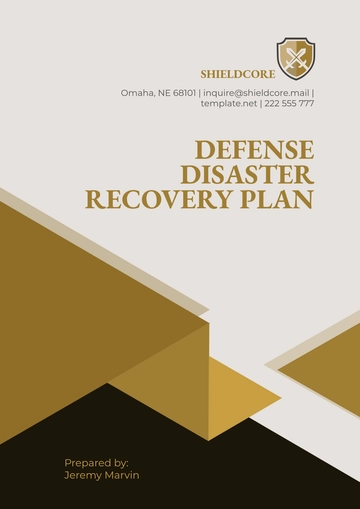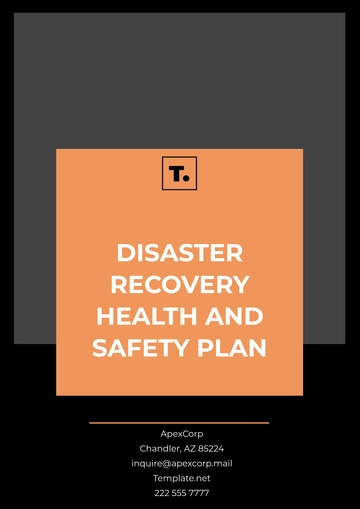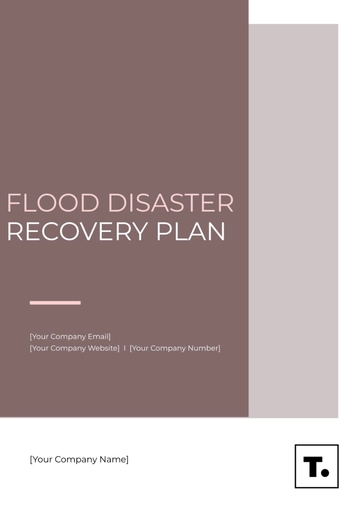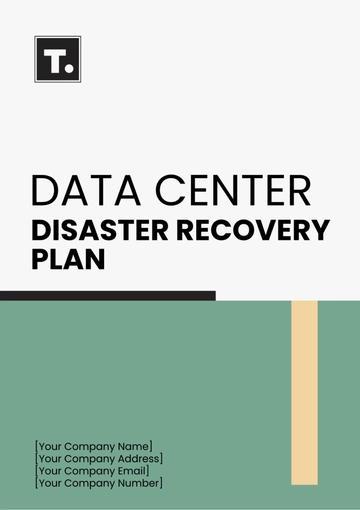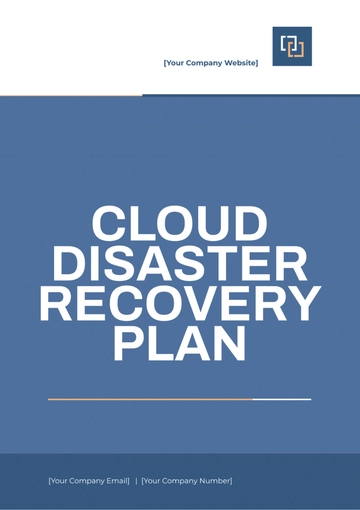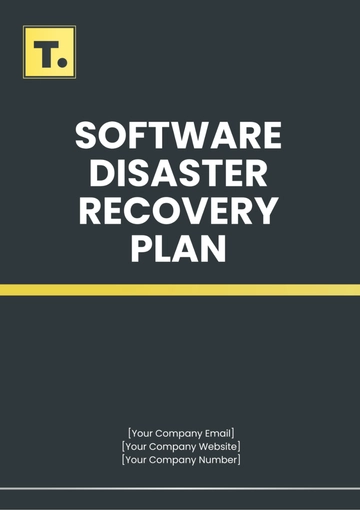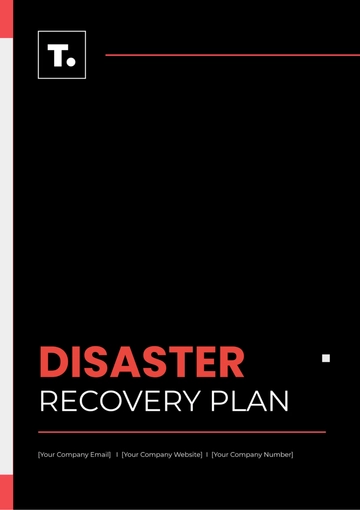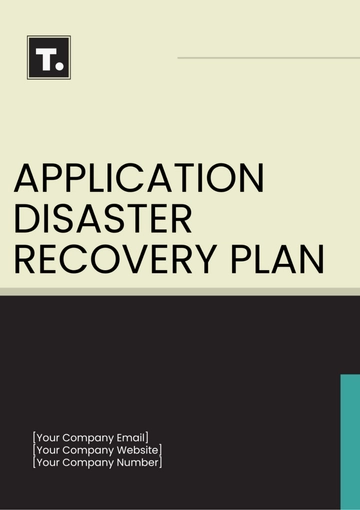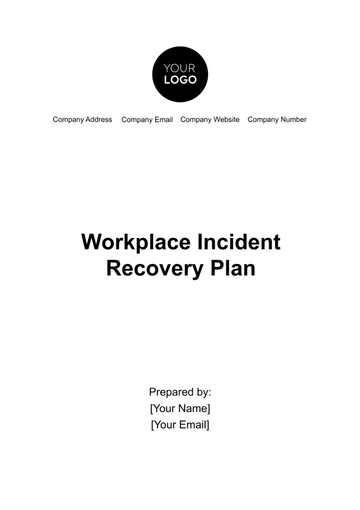Free Natural Disaster Recovery Plan
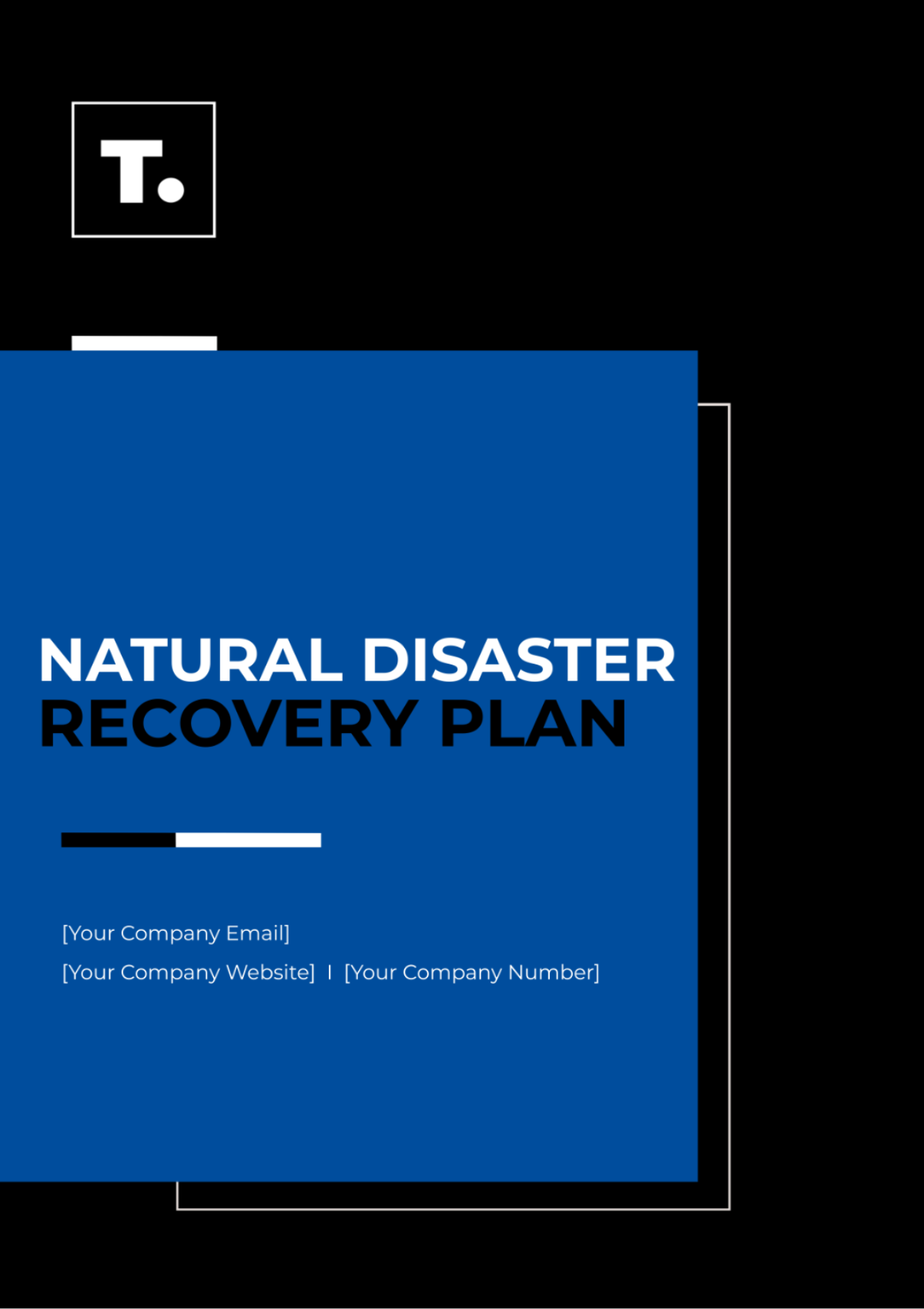
I. Introduction
A. Purpose
This Natural Disaster Recovery Plan outlines the procedures and responsibilities for responding to and recovering from natural disasters such as hurricanes, earthquakes, floods, and wildfires. The objective is to ensure the safety of personnel, minimize damage, and restore normal operations as quickly as possible.
B. Scope
This plan applies to all employees, contractors, and visitors at [Your Company Name].
II. Objectives
Ensure the safety and well-being of all employees.
Minimize operational disruptions.
Protect critical data and IT infrastructure.
Provide a clear communication plan for stakeholders.
Ensure a swift and efficient recovery process.
III. Scope
This plan covers:
Natural disasters including earthquakes, floods, hurricanes, and tornadoes.
All departments within the organization.
Critical IT systems and data.
IV. Risk Assessment
A. Identified Risks
Hurricanes
Earthquakes
Floods
Wildfires
B. Risk Analysis
Hurricanes: Potential for severe wind damage, flooding, and power outages.
Earthquakes: Risk of structural damage, injuries, and infrastructure disruption.
Floods: Risk of water damage to facilities, equipment, and data.
Wildfires: Threat to buildings, air quality, and personnel safety.
C. Mitigation Strategies
Conduct regular building inspections and maintenance.
Ensure compliance with building codes and standards.
Establish flood barriers and drainage systems.
Implement fire-resistant landscaping and building materials.
Develop emergency supply kits and safety drills.
V. Roles and Responsibilities
A. Disaster Recovery Team
Team Lead: [Your Name]
Email: [Your Company Email]
B. Team Members
IT Department Lead: Benjamin Foster ([Email])
Risk Management Officer: Ezra Carlson ([Email])
Compliance Officer: Nova Bennett ([Email])
Business Continuity Planner: Lily Jackson ([Email])
Department Heads: Addison Simmons, Aurora Collins, Isla Horton
VI. Emergency Response
A. Evacuation Procedures
Evacuation routes and exits are clearly marked and accessible.
Designated assembly points: [Assembly Point Locations]
B. Evacuation Roles and Responsibilities
Evacuation Coordinator: Sebastian Tate, responsible for overseeing evacuation procedures.
Floor Wardens: Oliver Edwards, Stella Reese, responsible for ensuring all personnel evacuate safely.
First Aid Responders: Sophia Parker, Nova Bennett, responsible for providing first aid as needed.
VII. Communication Plan
A. Internal Communication
Notify employees via internal email system
Send emergency alerts through company messaging app
Update status on company intranet
B. External Communication
Media spokesperson: Stella Reese
Official social media updates on [Your Company Social Media]
C. Contact Information
Role | Name | Contact Information |
|---|---|---|
Emergency Coordinator | Sebastian Tate | sebastian.tate@example.com |
Deputy Coordinator | Benjamin Foster | benjamin.foster@example.com |
Fire Department | Local Fire Dept. | [Fire Dept. Phone] |
Police Department | Local Police Dept. | [Police Dept. Phone] |
VIII. Damage Assessment and Recovery Procedures
A. Initial Damage Assessment
Conduct a walkthrough of the affected areas.
Document and photograph all damage.
B. Recovery Procedures
Secure the area to prevent further damage.
Begin clean-up and debris removal.
Prioritize repairs based on critical operations.
Notify stakeholders and provide regular updates.
Restore critical IT systems and data from backups.
Begin repairs to physical infrastructure as needed.
Review and analyze the response to improve future plans.
IX. Continuity of Operations Plan (COOP)
A. Essential Functions
Identify critical business functions and prioritize their recovery.
Temporary relocation plans for essential staff.
B. Resource Allocation
Emergency supplies: water, food, first aid kits.
Backup systems: power generators, data backups.
X. Data Backup and Restoration
A. Data Backup
Details of the company's backup strategy:
Frequency: Daily, Weekly, Monthly.
Storage: Off-site, Cloud-based solutions.
Responsibility: Managed by the IT Department.
B. Data Restoration
Identify critical data and prioritize restoration.
Verify backup integrity before restoration.
Follow the restoration procedure documented by the IT Department.
XI. Training and Testing
A. Training Programs
Regular training sessions for all employees.
Specialized training for emergency response teams.
B. Testing the Plan
Conduct annual drills and exercises.
Review and revise the plan based on drill outcomes.
XII. Plan Maintenance
A. Review and Update Schedule
Annual review: Next review date January 1, 2051.
Post-incident reviews and updates as necessary.
B. Document Control
Version control: Maintain a log of all changes and updates.
Distribution list: Ensure all relevant personnel have the latest version.
XIII. Appendices
A. Resource Inventory
Resource | Quantity | Location |
|---|---|---|
Generators | 5 | Warehouse 1 |
First Aid Kits | 20 | Main Office |
Bottled Water | 200 | Storage Room |
B. Emergency Kit Checklist
First aid supplies
Flashlights and batteries
Non-perishable food
Water
Important documents
Emergency contact numbers
C. Training and Drills
Schedule regular training sessions: Quarterly, starting March 2050
Conduct evacuation drills: Bi-annually, next drill June 2050
Review and update the plan annually: January 2051
- 100% Customizable, free editor
- Access 1 Million+ Templates, photo’s & graphics
- Download or share as a template
- Click and replace photos, graphics, text, backgrounds
- Resize, crop, AI write & more
- Access advanced editor
Get the ultimate Natural Disaster Recovery Plan Template from Template.net. This fully customizable and editable template ensures your business is prepared. Effortlessly tailor it to your needs using our intuitive Ai Editor Tool, providing comprehensive and professional planning for any natural disaster scenario.
You may also like
- Finance Plan
- Construction Plan
- Sales Plan
- Development Plan
- Career Plan
- Budget Plan
- HR Plan
- Education Plan
- Transition Plan
- Work Plan
- Training Plan
- Communication Plan
- Operation Plan
- Health And Safety Plan
- Strategy Plan
- Professional Development Plan
- Advertising Plan
- Risk Management Plan
- Restaurant Plan
- School Plan
- Nursing Home Patient Care Plan
- Nursing Care Plan
- Plan Event
- Startup Plan
- Social Media Plan
- Staffing Plan
- Annual Plan
- Content Plan
- Payment Plan
- Implementation Plan
- Hotel Plan
- Workout Plan
- Accounting Plan
- Campaign Plan
- Essay Plan
- 30 60 90 Day Plan
- Research Plan
- Recruitment Plan
- 90 Day Plan
- Quarterly Plan
- Emergency Plan
- 5 Year Plan
- Gym Plan
- Personal Plan
- IT and Software Plan
- Treatment Plan
- Real Estate Plan
- Law Firm Plan
- Healthcare Plan
- Improvement Plan
- Media Plan
- 5 Year Business Plan
- Learning Plan
- Marketing Campaign Plan
- Travel Agency Plan
- Cleaning Services Plan
- Interior Design Plan
- Performance Plan
- PR Plan
- Birth Plan
- Life Plan
- SEO Plan
- Disaster Recovery Plan
- Continuity Plan
- Launch Plan
- Legal Plan
- Behavior Plan
- Performance Improvement Plan
- Salon Plan
- Security Plan
- Security Management Plan
- Employee Development Plan
- Quality Plan
- Service Improvement Plan
- Growth Plan
- Incident Response Plan
- Basketball Plan
- Emergency Action Plan
- Product Launch Plan
- Spa Plan
- Employee Training Plan
- Data Analysis Plan
- Employee Action Plan
- Territory Plan
- Audit Plan
- Classroom Plan
- Activity Plan
- Parenting Plan
- Care Plan
- Project Execution Plan
- Exercise Plan
- Internship Plan
- Software Development Plan
- Continuous Improvement Plan
- Leave Plan
- 90 Day Sales Plan
- Advertising Agency Plan
- Employee Transition Plan
- Smart Action Plan
- Workplace Safety Plan
- Behavior Change Plan
- Contingency Plan
- Continuity of Operations Plan
- Health Plan
- Quality Control Plan
- Self Plan
- Sports Development Plan
- Change Management Plan
- Ecommerce Plan
- Personal Financial Plan
- Process Improvement Plan
- 30-60-90 Day Sales Plan
- Crisis Management Plan
- Engagement Plan
- Execution Plan
- Pandemic Plan
- Quality Assurance Plan
- Service Continuity Plan
- Agile Project Plan
- Fundraising Plan
- Job Transition Plan
- Asset Maintenance Plan
- Maintenance Plan
- Software Test Plan
- Staff Training and Development Plan
- 3 Year Plan
- Brand Activation Plan
- Release Plan
- Resource Plan
- Risk Mitigation Plan
- Teacher Plan
- 30 60 90 Day Plan for New Manager
- Food Safety Plan
- Food Truck Plan
- Hiring Plan
- Quality Management Plan
- Wellness Plan
- Behavior Intervention Plan
- Bonus Plan
- Investment Plan
- Maternity Leave Plan
- Pandemic Response Plan
- Succession Planning
- Coaching Plan
- Configuration Management Plan
- Remote Work Plan
- Self Care Plan
- Teaching Plan
- 100-Day Plan
- HACCP Plan
- Student Plan
- Sustainability Plan
- 30 60 90 Day Plan for Interview
- Access Plan
- Site Specific Safety Plan

